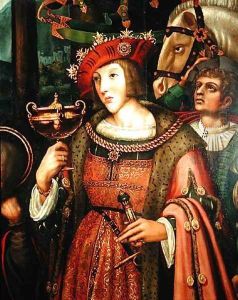Marco (Marco Calbrese) Cardisco Paintings
Marco Cardisco, sometimes known as Marco Calabrese due to his origin from Calabria, was an Italian painter of the Renaissance period. He was born around 1486 in the region of Calabria in southern Italy. Cardisco is regarded as one of the noteworthy artists who contributed to the spread of the Renaissance style in the region of Naples, which was then under Spanish rule.
Details about Cardisco's early life and training are scarce, but it is believed that he was initially influenced by the work of southern Italian painters and possibly studied under local masters. His style, however, was significantly influenced by the presence of other Renaissance artists such as Polidoro da Caravaggio and his pupil, Marco Pino, both of whom worked in Naples. Through exposure to these artists, Cardisco's work began to exhibit the characteristics of the Roman school of painting, which was notable for its classical influences and emphasis on the human figure.
Cardisco's most productive period was during the first four decades of the 16th century. He worked in Naples and its surrounding areas, receiving commissions from religious institutions and private patrons. His paintings often featured religious subjects, which was typical for the time, and he was known for his altarpieces and frescoes in churches. One of his most significant works is the altarpiece in the church of San Giovanni a Carbonara in Naples, which showcases his mature style.
Despite his contributions to the art of the region, Marco Cardisco remains a relatively obscure figure in the annals of art history, overshadowed by the more renowned masters of the Italian Renaissance. Little is known about his personal life, and his death is recorded as having occurred in 1542. Nonetheless, his work is an example of the diffusion of Renaissance ideas beyond the major artistic centers of Italy and provides valuable insight into the regional variations of the style during this period.
